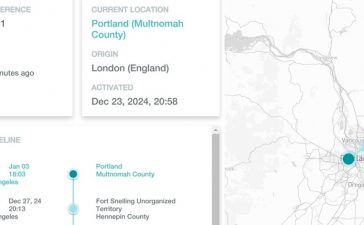Creating a great place for IT professionals to work takes more than offering top salaries and benefits. It means making a commitment to employees’ well-being and career growth, providing challenging work, supporting a diverse workforce, and fostering a positive and inclusive culture.
And lately it means making IT an integral part of the business itself. The best organizations recognize the importance of technology in achieving their goals, partnering with IT pros to innovate and drive the business forward.
For the 30th year, Computerworld publisher Foundry surveyed large, midsize, and small organizations to find the top IT employers. Read our special report to see which companies made our list and what makes them such desirable places to work. To read the Best Places to Work in IT 2024 report in PDF format, download it below.
Our 30th annual report highlights employers that offer IT pros top benefits, support a diverse workforce, provide robust career development opportunities, and much more. Computerworld
Companies remain bullish on IT — and its people
With artificial intelligence, data-driven insights, and digital experiences forming the engines for modern business, IT organizations have become the epicenter for innovation and the enablers of core business strategy. Ongoing digital transformation in every industry has elevated technology roles, creating unprecedented opportunities for professional growth.
Despite an uncertain global economy, organizations remain bullish on IT investments — and the people who develop, deliver, and support digital products and services. Foundry’s 30th annual Computerworld “Best Places to Work in IT” survey found that IT hiring remains steady, raises and promotions are plentiful, and companies are creating novel pathways for reskilling and upskilling employees to adapt to a rapidly evolving technology landscape.
Cultivating a more diverse IT workforce remains a top priority, with most companies supporting myriad initiatives to create communities that foster inclusivity and to source previously untapped candidate pools.
And with hybrid and remote models well established, many IT pros now have more flexibility and tools for working from wherever they are most comfortable while creating better balance in their personal lives.
Perks and benefits aside, our list of winners indicates that the most compelling aspect of today’s IT careers is the demonstrable impact technology can have on the business.
“We’re spending less time in the code and more time in the outcomes, which makes it super interesting,” says Scott Howitt, chief digital officer (CDO) of UKG, ranked No. 3 among large organizations in the “Best Places to Work in IT 2024” survey. “With the emergence of data, cloud, Kubernetes, and now AI, it’s a constantly changing and evolving field. We always need a fresh influx of people to help drive the evolution.”
Similarly, IT staffers at Ostfriesische Tee Gesellschaft GmbH & Co. KG (East Frisian Tea Company), ranked No. 1 among small companies, are spending less time on programming and more time “understanding processes and thinking differently,” says Karsten Rösener, CIO of the Germany-based tea manufacturer, which is known for its “Meßmer” brand. “Today, we are ultimately organizational developers and change managers,” adds Rösener.
IT in growth mode
In the midst of ongoing layoffs and budget cuts in other parts of the business, IT remains a relatively safe haven for growth and investment. Companies responding to the 2024 Computerworld survey said they are increasing full-time IT head count by an average of 9% while cutting back slightly on temporary and contract workers. Most respondents (86%) have increased the number of IT employees over the last three years, growing their teams by 44% on average. Looking ahead, 71% expect continued growth of their IT workforce over the next 12 months. IT turnover rates remain low, at approximately 11% and in line with the 2023 survey.
Strong hiring is accompanied by a steady stream of promotions and salary increases. Across all responding organizations, an average of 15% of IT employees advanced into new positions this last fiscal year, up slightly from what the 2023 research showed. Smaller firms were more likely to uplevel IT employees, at 18%, compared to only 14% of employees promoted at larger enterprises.
It was the rare firm that had salary cuts or hiring freezes — 96% of the respondents, across all size categories, confirmed that there was no active retrenching. Among IT employees, 91% were the beneficiaries of a raise this last year, mostly at large shops (95%) and less so in midsize companies (84%).
What’s driving the growth? At many organizations, technology’s growing role across the business is paving the way. For example, biopharma giant GSK has positioned technology at the heart of its mission, which requires continued IT expansion, says Shobie Ramakrishnan, the company’s chief digital and technology officer. GSK, ranked No. 2 among large companies in this year’s results, has grown its IT staff by nearly 300 professionals this year. Among the top drivers of fresh IT talent are data analytics and AI initiatives, including the rapid development of an enterprise ChatGPT application for natural-language knowledge assistance.
“There is broad recognition across industries that data and technology are a source of competitive advantage, and investing in technology drives the top line, profitability, and productivity,” Ramakrishnan says. “The pandemic just accelerated and precipitated this trend. From there, it is simply a supply-and-demand equation that has driven up hiring and promotions.”
Cultivating talent from within
In addition to cultivating new talent, IT organizations in this year’s survey are actively looking internally to fill critical roles. On average, 35% of IT vacancies were filled with inside candidates this year, down slightly from the prior year.
IT and HR leaders are doing several things to prepare existing IT employees for new roles. Nine in 10 (92%) are building new career pathways with attainable milestones designed to provide guidance and encourage mobility. Access to free career development and consulting services, offered by 79% of the responding firms, aids in career planning. Increases to the IT training budget (cited by 62% of the respondents) are being earmarked to fund technical certifications, professional career counseling, and business skills development.
Offering apprenticeship programs, tuition reimbursement, internal learning platforms, and dedicated development days are other ways companies are burnishing the skills of employees. Formal mentoring programs also are widely embraced — cited by 77% of all the respondents and 81% of the midsize firms.
For Power Home Remodeling, No. 3 among the midsize companies, the mission to build a best place to work in IT fits squarely with its unique “build vs. buy” technology strategy. As opposed to integrating off-the-shelf applications as part of its technology architecture, Power builds its critical applications and platforms in-house. Those include Nitro, Power’s custom software platform and digital twin, which models and runs all facets of the business. To champion innovation and keep technology teams current on the latest technologies, Power hosts Nitro Create every six months. In this week-long sprint, developers collaborate and flex ideas — with different themes for each event ranging from education, to hack-a-thons, to community service through building technology for nonprofit organizations.
More recently, Power established the Power Code Academy, which broadens its technology talent pool with potential candidates from the business ranks. This immersive six-month coding boot camp is designed for nontechnical employees in business functions such as accounting or sales to change their lives and career by learning software development. Thus far, nearly 20 employees have gone through the program and taken on new software development jobs.
Because it’s committed to building its own software platform, Power emphasizes a culture of continuous learning to foster a team of what Chief Innovation Officer Timothy Wenhold dubs “creators.”
“We attract people who want to build something and understand how to interface with the business,” says Wenhold, also Power Home Remodeling’s chief operating officer and a partner. “They have the freedom to create, and the only limitation is their aptitude to grow.”
DEI initiatives ramp up
Across the board, companies on this year’s Best Places lists are demonstrating more than just lip service to DEI initiatives, which are manifesting in a more diverse IT workforce. Companywide programs include employee resource groups (ERGs), ambassadorships, DEI-focused summits, panel discussions, and leadership training keyed to hot-button issues such as microaggressions, unconscious bias, and the importance of building diverse teams. There are also efforts to cultivate and source talent from nontraditional pools, among them partnerships with historically Black colleges and universities (HBCUs) and other diversity-focused universities and nonprofit organizations, targeted internships and recruitment events, as well as mandates for creating job candidate slates reflective of broader diversity goals.
The efforts are slowly moving the needle in IT. Among U.S. companies on the 2024 Computerworld “Best Places to Work in IT” list, minorities constitute one-third of the IT workforce and 26% of the IT managers. Among this year’s top performers for workforce diversity: New York Presbyterian Hospital, where 72% of the IT workforce and 64% of the IT managers identify as minorities; Amerisure, with minorities comprising 34% of the staff and 37.5% of the IT managers; and The Hartford, with 34% of the IT staff and 38% of the managers identifying as minorities.
Women make up 29% of the IT workforce and 29% of the IT managers among this year’s respondents, just a slight uptick from the 28% averages for both staff and managers in last year’s report.
Formalized DEI programs and goals are contributing to the progress organizations are making. Most companies surveyed (94%) have a documented DEI strategy and have instituted a variety of DEI tactics, including celebrating employee differences (95%), recruitment strategies aimed at attracting diverse employees (93%), and diversity and inclusion training (92%). ERGs, employee surveys, and incorporating accessibility into product or technology strategies are also popular tactics for raising awareness and meeting core DEI objectives.
Among the survey respondents, 62% have established DEI champions who are responsible for promoting workplace diversity and inclusion. However, less than one-third (31%) are holding IT and other leaders accountable for achieving DEI goals. A lack of accountability could be holding back efforts to accelerate diversity.
UKG, ranked No. 3 for diversity among large organizations, has established representation goals across the company, including a target of 38% women in global tech roles by 2026, up from its current 31%. UKG is leveraging a wide variety of initiatives to get there, including Unified Foundational Learning, a digital, peer-to-peer DEI-focused learning platform; an ambassador program to educate and model inclusive leadership; and nine ERGs, including communities for women, people of color, and working parents and caregivers.
CDO Howitt says diversity is important to culture but that it’s also a critical tool for problem-solving, especially for a software company. Establishing teams with representation from different genders, age groups, and cultural makeups enables IT organizations to look at problems in unique ways and from every angle. The result, he says, is much better business outcomes.
At Power Home Remodeling, ranked No. 2 for diversity among midsize companies, the “Strive for 35” campaign is designed to reach the 35% mark for all new hires to come from underrepresented groups — a goal the company has hit two years running, says Wenhold. To court more women in tech, the Power Women’s Initiative has championed several key benefits aimed at women’s issues, including more paid parental leave; infertility coverage; maternity management; a healthcare-related travel and lodging reimbursement policy in response to the Supreme Court ruling overturning Roe v. Wade; and most recently, subsidized child care.
“One of the reasons women leave the workforce is the way most core family structures operate,” Wenhold says. “If we’re going to retain women, we have to address their requirements. This is not a checkbox thing — we look at how to move the needle for the business and people at the same time. If you do the right thing for people, the business thrives.”
Settling into a hybrid workplace
Three years after the onset of the pandemic forced a rapid shift to remote work, many organizations now have well-established hybrid work models, featuring a mix of remote, hybrid, and in-office employees. More than half of the organizations in this year’s study (56%) have a hybrid IT workforce, with 32% fully remote and 12% back in the office — the latter group up slightly from 10% in last year’s report. Midsize companies are more likely to embrace a hybrid model (61%), whereas smaller firms have a greater propensity for remote work (35%).
Although many organizations offer individuals some autonomy for when and where to work, management approval is increasingly required for those decisions. Among the respondents, 62% said they have moderate autonomy, meaning that employees have some flexibility, with appropriate management sign-off. The majority of firms (91%) have established formal policies for flexible work, up significantly from 83% in last year’s survey.
Companies continue to put tools and processes in place to enable flexible work, including investments in collaboration tools; enhanced security options; and cloud-based applications for anywhere, anytime access. To support a collaborative culture, virtual social events, buddy systems that pair team members with new hires, and digital resource centers stocked with relevant communications and policy information are all designed to help forge relationships and keep employees in the know, regardless of their physical location.
BCU, the No. 4 small company in this year’s survey, has no formal guidelines for where people work, and it doesn’t intend to change course anytime soon. The company has invested in “to-go” boxes that contain everything needed to stand up a remote workspace, along with a “roam” virtual desktop environment and collaboration platforms such as Microsoft Teams to ensure that employees can work effectively in any environment, says Scott Zulpo, BCU’s senior vice president and chief technology officer.
Providing workers the flexibility to work where they work best is part of the Credit Union’s culture, which is goal-oriented and puts an emphasis on trust, he explains. The ethos also helps BCU attract high-caliber talent that otherwise might have been out of reach. “Some technology skills are very hard to find,” Zulpo says. “By opening up hiring to someone who can work remotely, we gain access to some excellent talent.”
Beyond fostering more collaborative hybrid work, it’s equally important to create an IT environment that drives engagement and integrates new employees. At East Frisian Tea Company, designated in-office days enable teams to gather to provide updates on their work. Open seating plans foster additional collaboration among colleagues who may not work closely together day-to-day.
“This leads to new constellations with people who have not sat together before,” says Rösener, the CIO. “These measures support team spirit. Socializing and exchange are our standards here.”
A focus on employee wellness
While supporting flexible work models, organizations are also exploring ways to help teams maintain face-to-face connections. Gym memberships; on-site fitness centers; meditation rooms; and access to yoga instructors, chiropractors, and massage therapists are among the wellness benefits offered to entice employees back into the office. Similarly, some companies have brought back subsidized cafeterias, complete with chef-inspired healthy meal choices along with barista bars to encourage employee interactions in a more casual, fun setting.
Amid a plentiful selection of benefits and perks, companies are zeroing in on wellness, work/life balance, and programs that speak to employees’ sense of purpose — all extracurriculars that resonate particularly with younger employees. To encourage employees’ sense of community, companies are offering paid time off to “pay it forward” and devote time to passion projects as well as volunteer hours at organizations such as Habitat for Humanity and food banks.
Kinaxis, ranked No. 5 for midsize companies in this year’s survey, has singled out offering wellness benefits as a way to engage employees and also to ensure that they are working at full capacity, according to CIO Yvonne Holland. In addition to offering an on-site gym; free fitness classes; and on-site specialists in areas such as nutrition, massage, and mental health, the company hosts regular virtual fitness challenges. In 2022, 403 Kinaxis athletes participated in the challenges globally, logging nearly 185,000 hours in activity time, both running and cycling.
Wellness-minded perks help people build bonds, better manage work pressures, and live a healthier lifestyle. But the real benefits come from helping employees live up to their potential. “When you’re healthy, it’s easier to do everything,” Holland says. “We want to help people feel better and make it easier to show up every day and do their work.”
With technology as the core foundation and key enabler of business, an IT career can come with long hours, lots of stress, and the challenge of juggling multiple constituencies’ needs. Yet it also provides unprecedented opportunity to impact business strategy and drive transformation. For that reason and the many others that this year’s winners demonstrate, it’s a compelling time to be in IT. — Beth Stackpole












